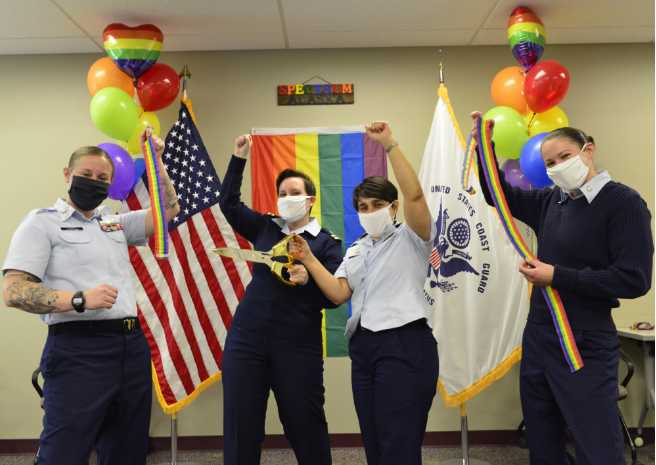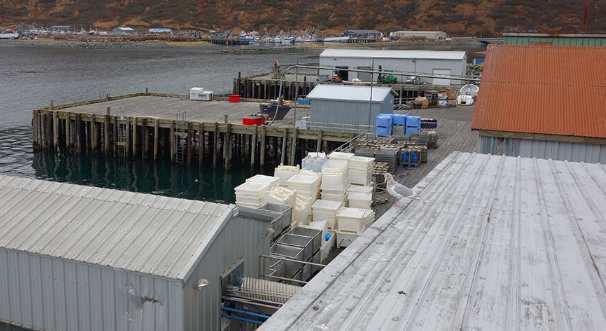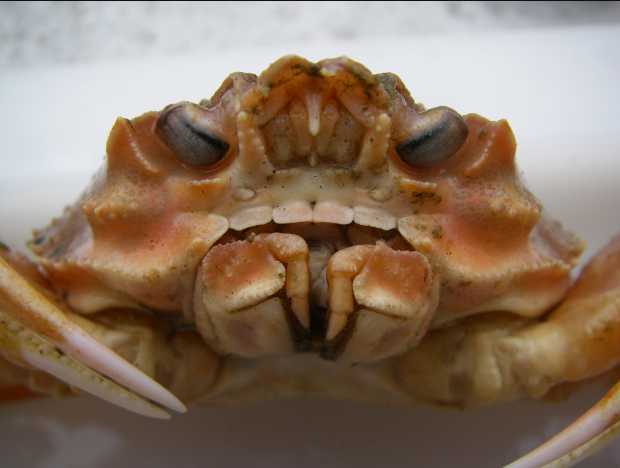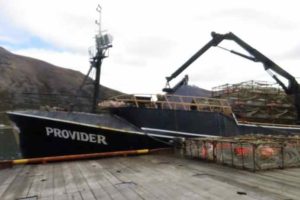
ANCHORAGE, Alaska — Within the commercial crab fishing fleet of Alaska’s Bering Sea and Aleutian Islands (BSAI) sail some of the most widely admired and respected fishermen on earth.
An international audience has peered through the window to their world on the Discovery Channel’s Deadliest Catch—Season 3 of the TV show alone attracted more than 49 million viewers. Now in its 17th season of production, the show regularly attracts over 2 million viewers per episode. Crab boat captains featured on the program are famous for making difficult decisions in life and death situations, while bearing responsibility for the lives of their crew.
The BSAI crab fishery was widely considered the most hazardous U.S. commercial fishery in the 1990s after 73 fishing-related fatalities. Although safety regulations in place at that time required vessels to carry lifesaving equipment, laws did not address the problem of overloading vessels with crab pots—a major cause of vessel disasters and deaths. This gap in safety regulations was partially corrected by the Coast Guard in 1999 with the introduction of a dockside stability and safety compliance check program. The number and rate of fatalities in the fleet have since decreased substantially.
“You have to thank the Coast Guard,” said “Wild Bill” Wichrowski, a famous BSAI crab fleet captain of fishing vessel Summer Bay, during an October 2018 interview at KUCB Radio in Dutch Harbor. “Years ago (the fleet) would lose two or three boats a season, but now it’s pretty few and far between. They ensure that when we leave the dock, they’ve done the best they can do to make sure we come back.”
Traditionally, teams of commercial fishing vessel examiners from Alaska’s 17th Coast Guard District check the majority of the crab fleet just before the opening of king crab season in mid-October in Dutch Harbor, King Cove and Kodiak. Their focus is safety gear, safety procedure and vessel stability.
In addition to making sure each boat has all required survival gear, examiners weigh a sampling of pots and review the vessel’s loaded condition with the master to ensure compliance with the vessel’s stability instructions.
[content id=”79272″]
These safety compliance checks are absolutely critical every year, because gear on a crab boat is constantly changing.
Captains and crew talk about the maximum allowable load for their boats, as well as how they need to be loaded.
Recent tragedies in these fisheries have shed light on just how important stability checks are for the fishing fleet.
Fishing vessels Destination and Scandies Rose sank in February 2017, and New Year’s Eve 2019, respectively, claiming the lives of 11 fishermen.
The Coast Guard is encouraging the crab fleet to call and request an additional safety and stability check before heading out this winter to fish the pot cod and opilio crab seasons.
“We have traditionally focused a major safety and stability check effort at the beginning of king crab season in very specific locations because we know where the fleet will be—we’re going to find the most boats in the same places at the same time,” said Scott Wilwert, commercial fishing vessel safety coordinator for the 17th Coast Guard District in Juneau. “But we’re encouraging fishermen to reach out to us again before the winter season, to schedule another check.”
Though the checks are voluntary, a captain’s incentives to schedule one are numerous.
“In addition to double checking that you’re doing everything you can to bring your crew home safe, you’re less likely to get boarded at sea and fined for violations if you received a safety and stability check at the dock,” said Petty Officer 2nd Class Holly Hugunin, an examiner at Sector Anchorage. “We don’t issue any fines during these stability checks, but a discrepancy at sea can cost you money, or worse yet, someone’s life.”
A boat that is not loaded correctly can capsize in a matter of seconds due to a variety of variables such as improper liquid loading for the different tanks, or insufficient watertight integrity. An already unstable vessel is exacerbated by ice and heavy seas.
But ice alone can sink a boat. During icing conditions a vessel’s load size and limitations are reduced in that vessel’s stability book. Every good crab boat captain understands the importance of paying particular attention to ice forecasts, and remaining vigilant about limiting the number of pots aboard with anticipated icing. They also recognize how crucial it is to break up ice and remove it as quickly as it forms.
“Whether it’s your second time in two months, or your first time in years, taking advantage of a safety and stability check with us before fishing this winter can help prevent another tragedy,” said Russ Hazlett, an examiner at Sector Anchorage. “The most likely locations in Alaska to schedule an exam this winter are Kodiak, Homer, Seward and Dutch Harbor where we have marine safety detachments. If nothing else, call us to attempt a stability check over the phone, regardless of where you’re fishing from.”
Fishermen are reminded of the state requirement to call the Coast Guard each time they prepare to depart port loaded with pot gear.
“I am extremely proud of the hard work done by our Coast Guard crews and appreciate the continued participation of the BSAI fleet in these safety compliance checks,” said Capt. Leanne M. Lusk, commander, Sector Anchorage. “Together we can extend our shared commitment to safety into the winter seaon.”
The global appeal of the BSAI crab fleet can likely be attributed to their extraordinary bravery and the unwavering skill they demonstrate under deadly conditions. While fans of Deadliest Catch are drawn to the danger, none want to see their favorite fishermen hurt or lost at sea.
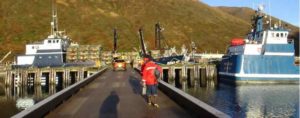
-USCG-



